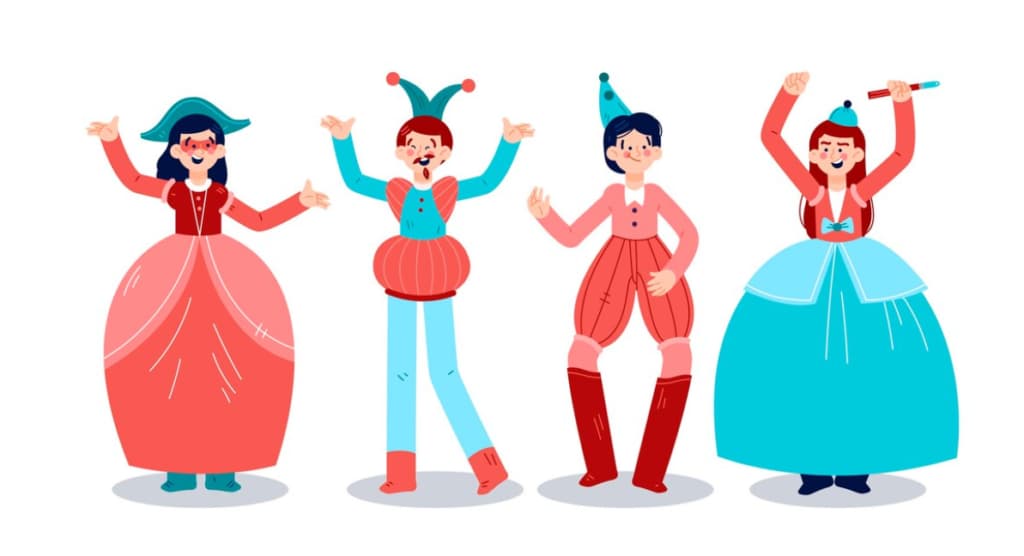A mesmerizing spectacle in live theater is the magical transformation of an actor into a different character via a swift costume quick change. This feat, which happens in an blink of an eye, is a testament to precision, teamwork, planning, and rehearsal. It is a seamless process involving a group of skilled professionals – actors themselves, designers, and wardrobe handlers. This may seem challenging, but with enough practice, the task becomes as rhythmic as a well-orchestrated symphony.
Drawing from a recent example, the theatergoers at Marriott Theatre near Chicago were left astounded during the production of Singin’ in the Rain by the swift costume changes of lead actor Danny Gardner, playing ‘Hollywood star’ Don Lockwood. The actor had to execute almost 20 quick changes within the first five minutes of the show, an act as exciting as it was demanding.
Over years of experience, Gardner has overcome several costume hiccups, such as an uncooperative harness in Mary Poppins and a wardrobe malfunction caused by a broken shoelace in Dames at Sea during its Broadway revival. Gardner credits his ability to execute successful quick changes to the art of staying calm and acting efficiently rather than hurriedly.
The Art of Seamless Quick Change

Of course, mental control and focus are only parts of the equation. To facilitate seamless quick changes, the costumes for Singin’ in the Rain were designed to incorporate layers. This meant that a new look could be achieved by merely adding or discarding layers of clothing.
The concept may seem elaborate, as Gardner acknowledges, but he was able to quickly transition between different looks by layering three different costumes. From sporting a smoking jacket with tuxedo pants to appearing as an 18th-century aristocrat, Gardner was prepared to transform rapidly, thanks to strategic wardrobe planning.
How a Costume Quick Change is Achieved
Delving into the preparation required, a seasoned wardrobe supervisor, Emily Goss, stresses that quick changes need to be an integral part of the production planning. This means that if an actor is required to transition from a period dress to a flashy tap dance attire in a limited time, it needs to be discussed and planned out from the beginning. This ensures the costumes are designed with quick changes in mind.
In this regard, the role of costume design becomes crucial. Design techniques such as reducing bulk, replacing invisible zippers with traditional ones, and even replacing shoelaces with elastic can drastically reduce the time of change. Other fastening methods such as Velcro or snaps can replace buttons for rapid dressing. Rachel Barnett, a costume design and technology assistant professor, further emphasizes how a garment can retain its period aesthetics while having a simplified interior structure to aid quick changes.
Moreover, the importance of undergarments in quick changes cannot be overstated. A pair of Spanx and a comfortable skin-toned bra for women, and boxer briefs for men, are highly beneficial during quick changes, particularly for period pieces.
Insights into Perfecting a Costume Quick Change
To gain a more profound understanding of the process, working backstage for at least one production could be invaluable. This would offer first-hand experience of the role of a dresser – a crucial member of the wardrobe crew helping an actor through a quick change. Interestingly, this is one of the least acknowledged roles in a production. Hence, a small appreciation goes a long way in fostering a positive relationship among dressers, actors, and costume designers.
Philadelphia-based actor Matteo Scammel highlights the importance of clear communication between actors and dressers. Both must have a clear understanding of the change process to prevent any mishaps. He suggests that an actor should patiently follow the dresser’s instructions to ensure the change goes smoothly.
The Role of Planning in Quick Change

The process of transitioning from one costume to another during a performance requires meticulous coordination and planning. Ensuring that all costume elements are in place and easily accessible is critical to this process. A well-organized backstage area can dramatically reduce the time it takes to complete a quick change and increase the efficiency of the process.
- Consider the order in which costumes are removed and added: Understanding the sequence in which the costume layers need to be removed or added can facilitate smoother transitions;
- Practice makes perfect: Practicing the quick change before the actual performance can prevent potential errors and mishaps during the show;
- Stay flexible and ready to adapt: Despite the best-laid plans, sometimes things go awry. Staying flexible and adaptable can help overcome unexpected challenges.
Deepening the Understanding of the Quick Change Process
To further understand and appreciate the process of quick change, it is crucial to peek into the experiences of those who execute these swift transitions.
- Relationship between actors and wardrobe crew: A strong, positive relationship between actors and the wardrobe crew is the foundation of successful quick changes. Mutual respect and open communication are essential;
- Importance of the dresser’s role: A dresser plays a crucial role in facilitating quick changes. Their expertise, speed, and efficiency determine the success of these swift transitions;
- The psychological aspect of quick changes: Executing a quick change can be as mentally challenging as it is physically demanding. Maintaining calm and focus is paramount for everyone involved.
In the world of theater, the seamless dance of quick changes is an unseen yet crucial part of the magic. It’s a complex process that requires meticulous planning, practice, innovation, and a sense of calm under pressure. With these insights into the process of quick changes, one gains a deeper appreciation for the hard work and teamwork that goes into making a production a success. After all, every element, seen or unseen, contributes to the magic of live theater.
Conclusion
In conclusion, the art of a quick costume change in live theatre is a profound blend of precision, practice, and teamwork. It requires careful planning from designers, adaptability from actors, and seamless coordination by dressers. Each step, from layering costumes for swift transformations to the meticulous organization backstage, contributes to this magical dance of metamorphosis. Through the understanding of its intricacies, one can appreciate and relish the marvel that quick costume changes bring to the realm of live theatre.